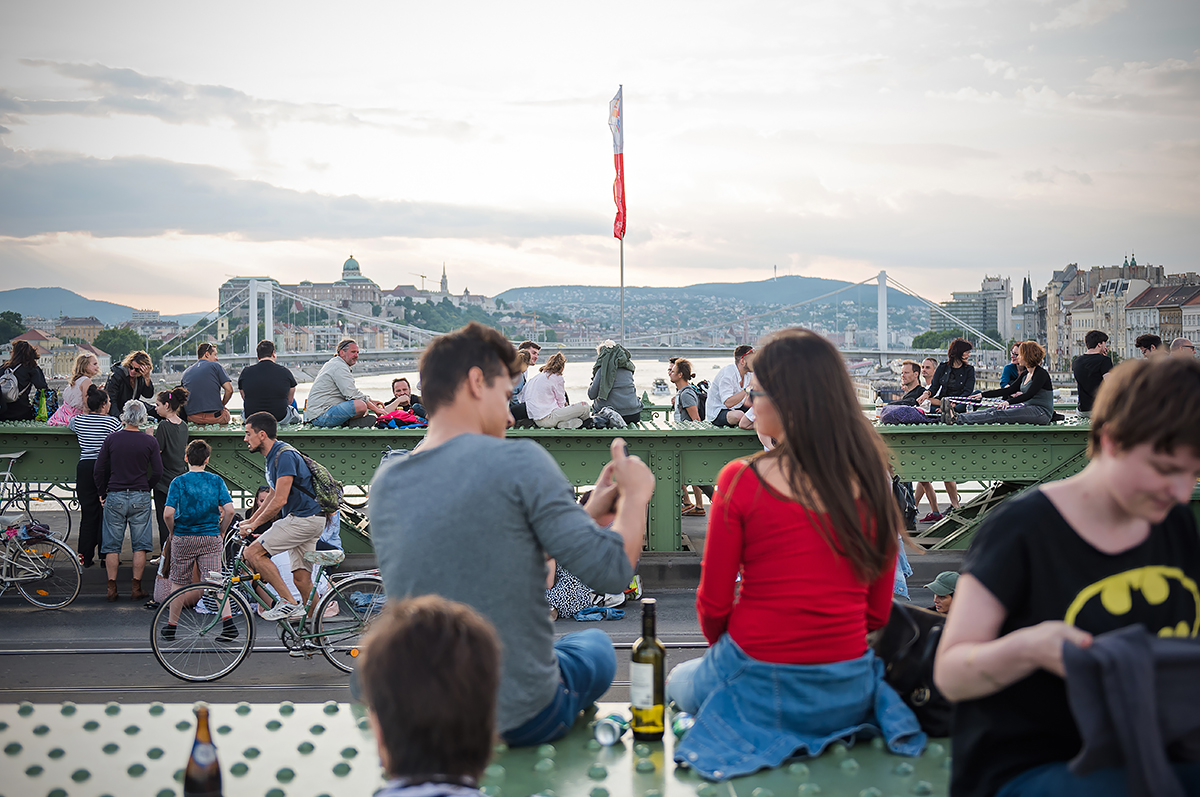The impromptu picnic events on Budapest’s Liberty Bridge remain vivid in our memories, connecting freedom-seeking urban dwellers during the summer months across the Hungarian capital. The alfresco activities on this statuesque city span also inspired a duo of Budapest design studios to submit Hungary’s winning entry for the Venice Biennale 2018, with Liberty Bridge being in the project’s spotlight – the cooperative crew is planning to set up an unusual vantage point reminiscent of Liberty Bridge to link design aficionados during the fascinating architecture fair.
“Liberty Bridge new urban horizons” is the name of the progressive project that’s set to turn heads during the 16th International Architecture Exhibition happening from May 26th through November 25th in Venice. Demonstrating an urban community event (when the bridge became a scene for impromptu summertime gatherings with cool crowds flooding the emerald-hued monument while it was closed to car traffic for three months in 2016, and then again during designated weekend days in 2017 with the help of the local Valyo “City and River Association”), the intriguing installation will evoke liberating metropolitan moments and serve as a stirring lookout space while providing fresh perspectives to visitors at the Venice Biennale’s Hungarian pavilion.
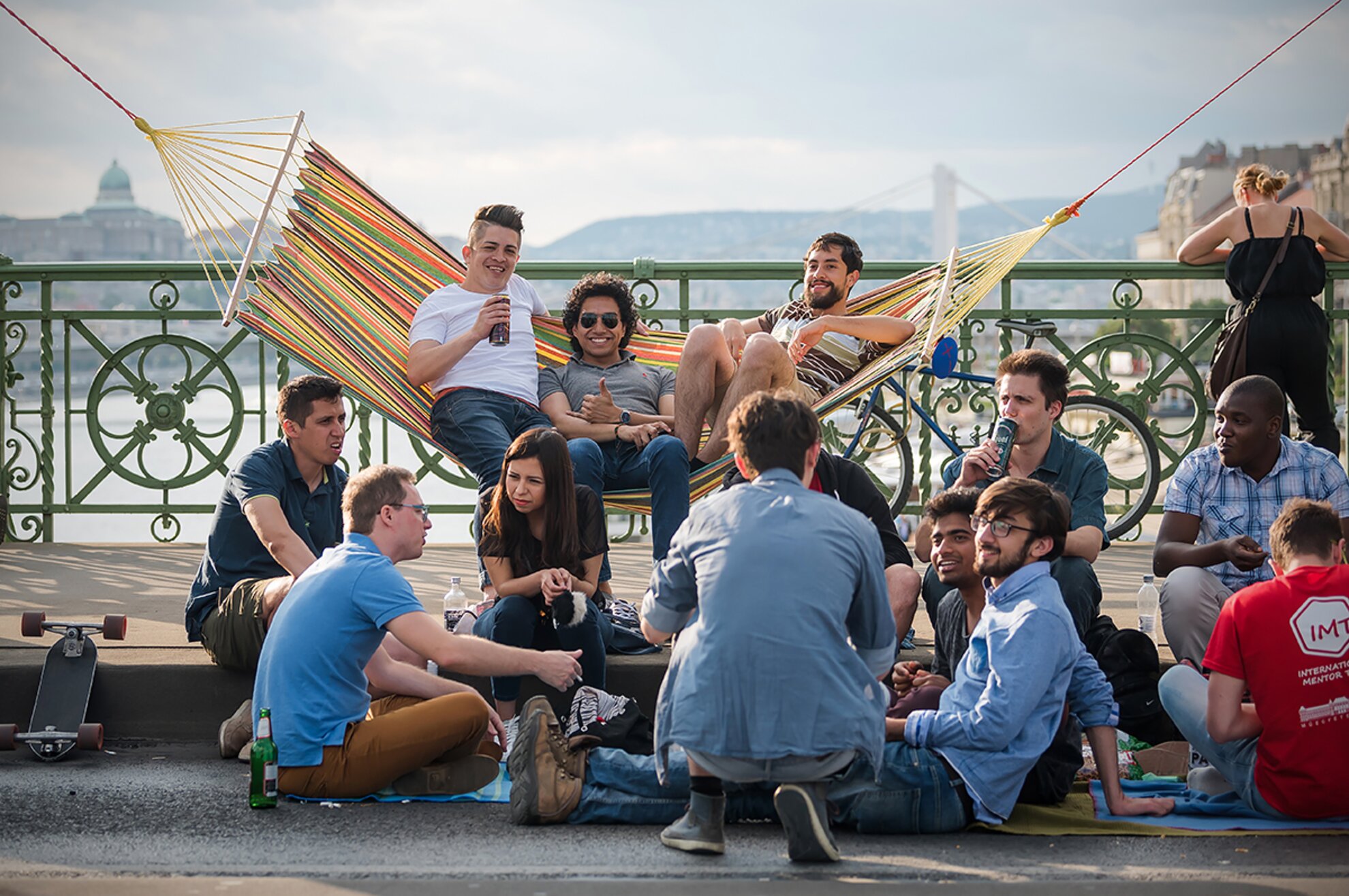
Dreamed up by the Budapest-based Kultúrgorilla and Studio Nomad design studios, the plan to manifest Liberty Bridge at the Floating City’s Giardini parkland proved to be an idea that fits best with the Venice Biennale’s Freespace theme for 2018. The collaborative construction aims to raise awareness of spontaneous grassroots initiatives amid an urban environment, and to demonstrate the role of creative civil activities in major cities. Meanwhile, those visiting the Magyar exhibition at the international art attraction can see how innovative actions can contribute to urban-planning practices.
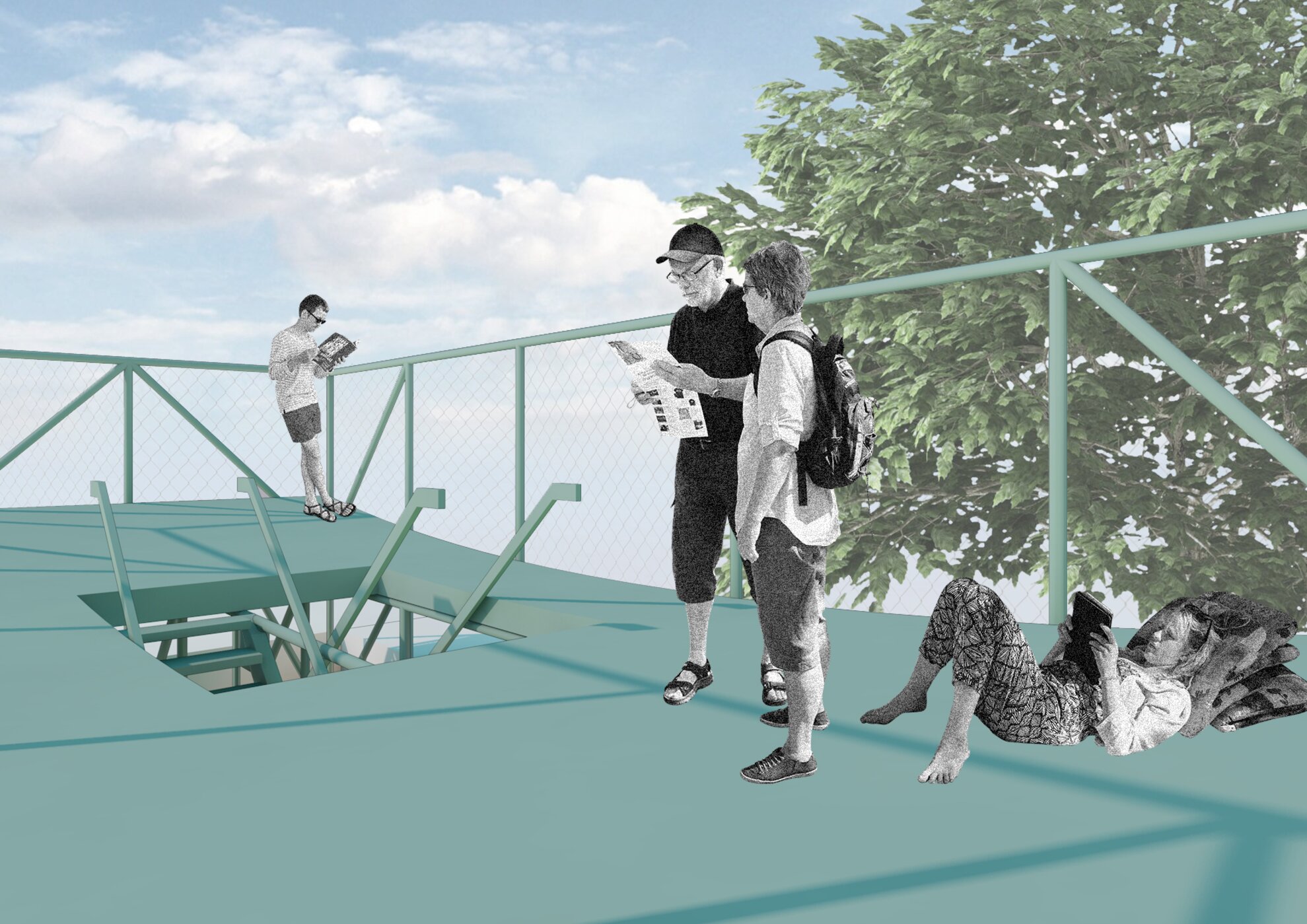
A trio of connecting segments makes the Budapest-themed display accessible to Venice Biennale visitors: as the first part of the exhibition, the “Free space” concept demonstrates Liberty Bridge’s cultural and historical heritage by presenting documents, infographics, videos, and sound installations. Built as the display’s centerpiece, an unpretentious lookout point will soar skywards in the “New horizons” section of the presentation to provide sprawling perspectives over the exhibition area for anyone who ascends this fascinating temporary fixture resembling Liberty Bridge. For the last part of the exhibit, the “Shared visions” program is set to involve design studios and visitors to the fair.
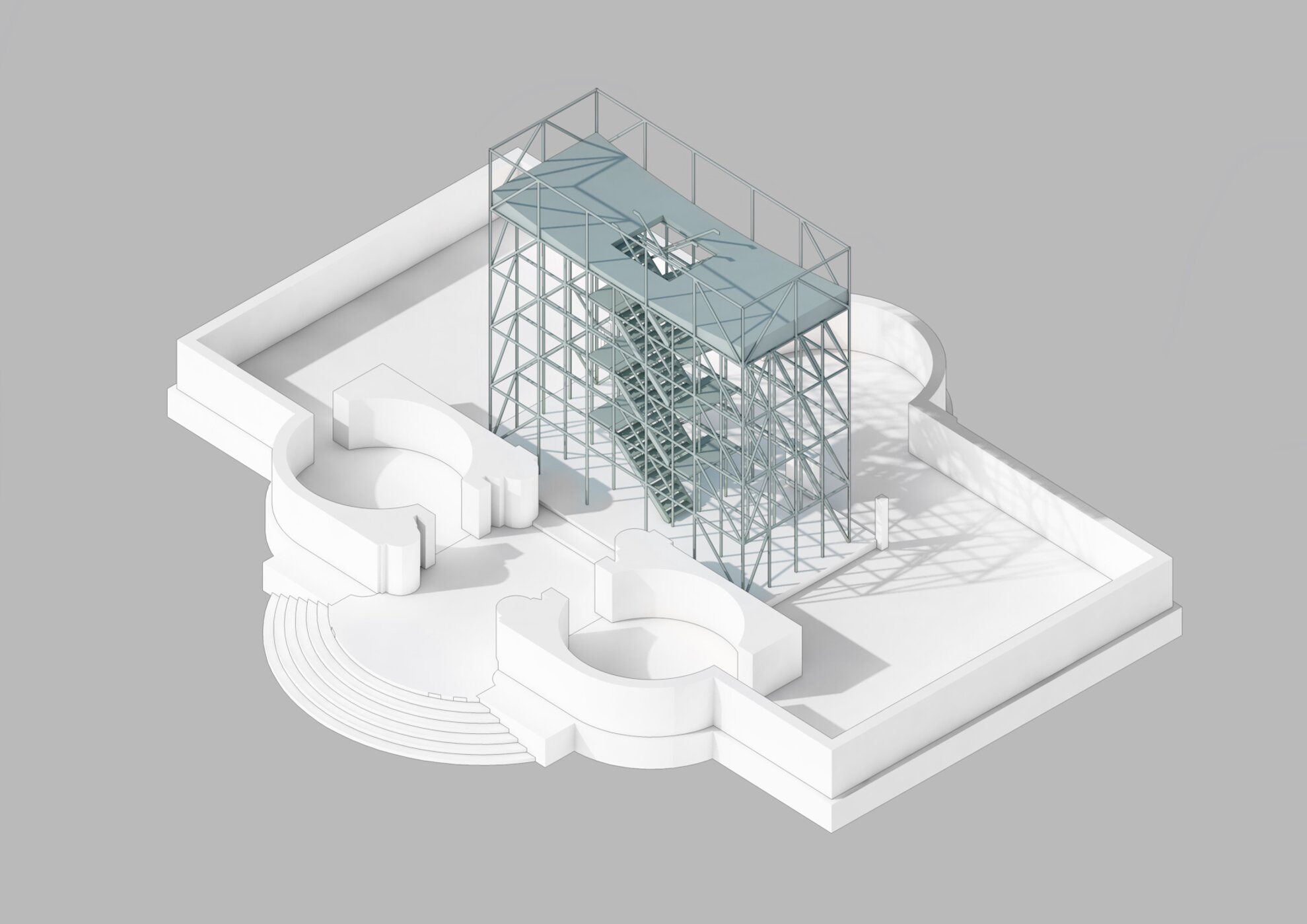
Including the Liberty Bridge project, nine entries were submitted during the national contest for the Venice Biennale 2018, and all of the design plans are available on the website of Budapest’s Ludwig Museum, which coordinates Hungary’s participation at the architecture event.
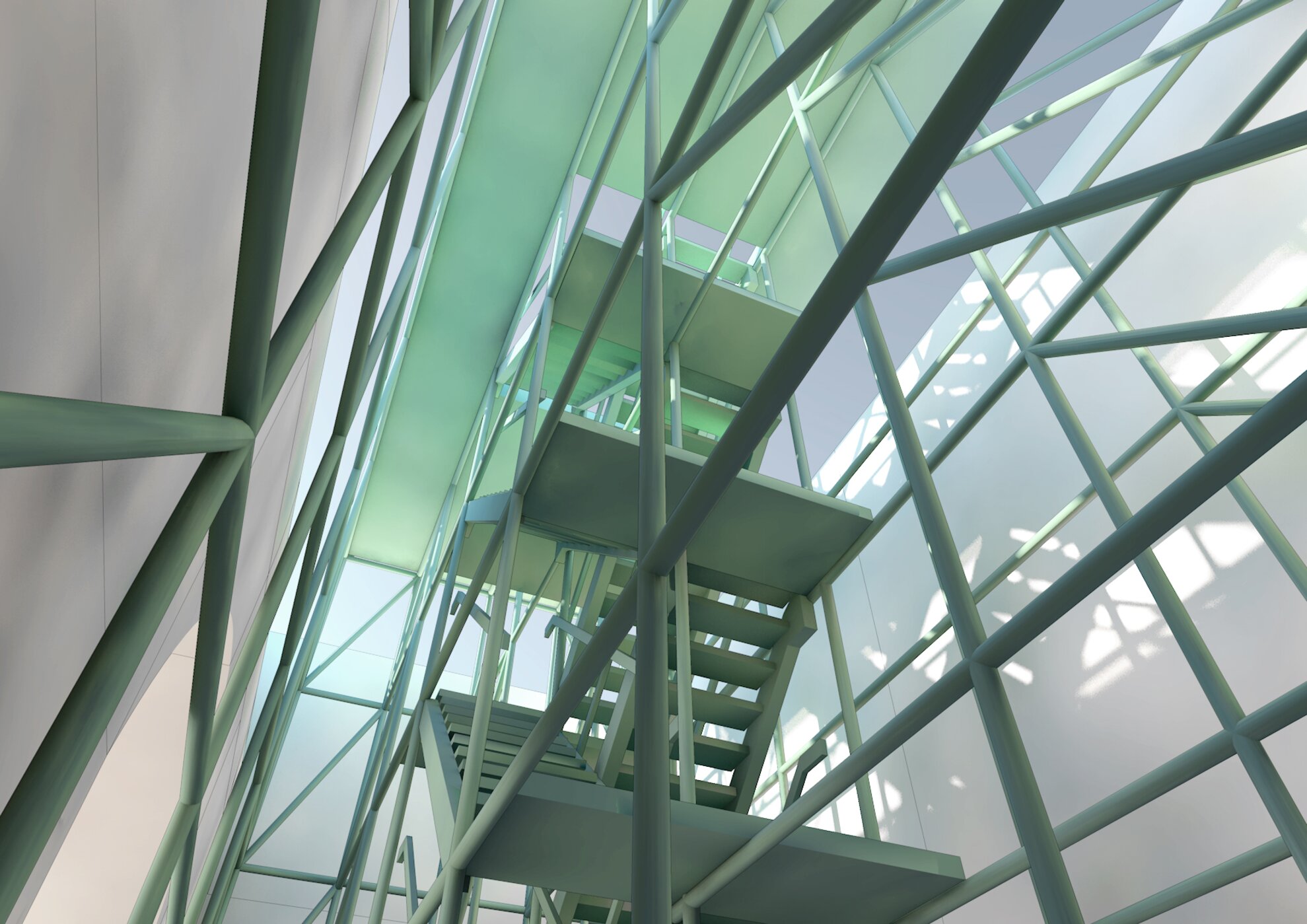
Meanwhile, we hope that we can enjoy impromptu gatherings again on Budapest’s 19th-century span next summer, and by spreading the Liberty Bridge picnic event as an example of positively utilizing urban spaces, we can immerse in a series of similarly inspiring activities in the Hungarian capital.
For more details about all of Hungary’s submitted entries for this contest, visit the official website of Ludwig Museum.
